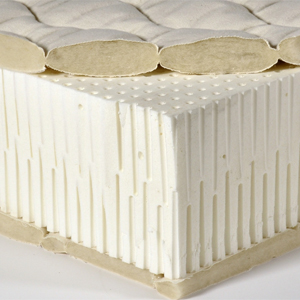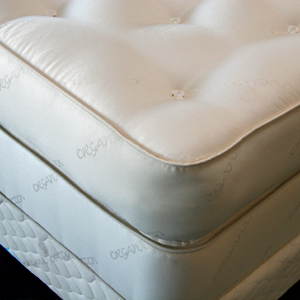Story at-a-glance
Flame retardant chemicals have been linked to serious health risks, including infertility, birth defects, neurodevelopmental delays, reduced IQ, hormonal disruptions and cancer.
More than 80 percent of women struggling with infertility were found to have organophosphate flame retardants in their urine; high levels were also linked to a 40 percent lower chance of conception after a full cycle of IVF treatment compared to those with the lowest levels
The most comprehensive recommendation is to opt for organic or “green” alternatives no matter what product is under consideration — be it a piece of furniture, clothing, kid’s toy or yoga mat
Weight Training and Timed Protein Intake Help Prevent Age-Related Muscle Decline
Endorphin Release Varies From Exercise Intensity
By Dr. Mercola
Couch cushions, carpeting, mattresses, children’s items, electronics and yoga mats are just a few examples of sources that expose you to toxic flame retardant chemicals, many of which have been linked to serious health risks, including:
Infertility
Birth defects
Neurodevelopmental delays,1 reduced IQ2 and behavioral problems in children
Hormone disruptions3
Cancer
In fact, flame retardant chemicals have been identified as one of 17 “high priority” chemical groups that should be avoided to reduce breast cancer.4,5 These chemicals are also poisoning pets6 and wildlife. The most comprehensive recommendation is to opt for organic or “green” alternatives no matter what product is under consideration — be it a piece of furniture, clothing, kid’s toy or yoga mat.
This is by far the easiest route, as manufacturers are not required to disclose the chemicals they use to make their products comply with fire safety regulations. Items made with wool, organic cotton or silk are excellent alternatives to conventional mattresses, bedding and exercise pads as these materials are naturally flame-retardant.
Flame Retardants Take a Toll on Fertility
According to recent research, more than 80 percent of women struggling with infertility had three types of organophosphate flame retardants (PFRs) in their urine.7,8,9,10 Women with high levels of these chemicals were also about 40 percent less likely to conceive after a full cycle of in vitro fertilization (IVF) treatments, compared to those with the lowest levels.
More specifically, 87 percent had detectable levels of bis(1,3-dichloro-2-propyl) phosphate, 94 percent had diphenyl phosphate and 80 percent had isopropylphenyl phenyl phosphate in their system. According to co-author Courtney Carignan, Ph.D.,11 “These findings suggest that exposure to PFRs may be one of many risk factors for lower reproductive success.” Dr. Russ Hauser, professor at Harvard University school of public health, added:
“Couples undergoing IVF and trying to improve their chances of success by reducing their exposure to environmental chemicals may want to opt for products that are flame-retardant free.”
Previous research has linked PFRs to infertility as well, showing the chemicals interfere with reproductive hormones. While the featured study focused on women, other studies12 have linked PFR exposure to lowered sperm motility in men.
Most Homes Have Multiple Sources of Toxic Flame Retardants
PFRs are commonly added to polyurethane foam, gym mats and baby items such as car seats, ostensibly to reduce the risk of the items catching fire. However, the chemicals do not remain in these items. They spread, contaminating air and dust. They can also migrate through direct contact. One 2015 study13 found nearly every dust sample collected from American homes contained the flame retardants Tris phosphate and triphenyl phosphate (TPHP).
Ninety-one percent of urine samples from the residents also contained metabolites of Tris phosphate, and 83 percent had metabolites of TPHP. Disturbingly, toddlers have been found to have levels of flame retardants that are as much as five times higher than their mother’s.14 Needless to say, bioaccumulation can have serious health consequences over the course of a lifetime, and may ultimately affect the reproductive capacity of coming generations.
Flame Retardants Do Not Work as Advertised
Despite industry claims that these chemicals are necessary and save lives, there’s virtually no evidence to suggest they actually work as advertised. On the contrary, mounting evidence shows they only make house fires more dangerous and deadly — especially for firefighters who are repeatedly exposed to these toxic fumes.15 For example, California female firefighters aged 40 to 50 are six times more likely to develop breast cancer than the national average.
According to the chemical industry, fire-retardant furniture increases your escape time fifteenfold in the case of a fire. This claim came from a study using powerful, NASA-style flame retardants, which provided an extra 15 seconds of escape time. But this is not the same type of chemical used in most furniture.
Tests have shown the most widely used flame retardants provide no meaningful increase in escape time at all, while actually increasing the toxicity of the smoke. Ironically, these toxins are far more likely to kill you than the fire itself.
Manipulation and Lies Kept Toxic Flame Retardants on the Market
The primary industry front group responsible for perpetuating the myth that flame retardant chemicals save lives was Citizens for Fire Safety, founded in 2007. The group was disbanded in late 2012.16 While sounding like a grassroots organization of concerned citizens and fire professionals, it was actually a trade association for the three largest manufacturers of flame retardant chemicals in the world.
The aim of this group was to protect the chemical industry from legislation that might cut into their business, and expanding the commercial use of flame retardants. For example, when California tried to ban flame retardants in 2007, Citizens for Fire Safety spent $22 million to defeat the measure.
Over a five-year period, the group successfully defeated nearly 60 bills throughout the U.S. trying to rid flame retardants from the market.17 The American Chemistry Council (ACC) maintained it had nothing to do with Citizens for Fire Safety. However, Grant David Gillham, former head of Citizens for Fire Safety, has admitted the ACC “flat out lied” when they denied working with his group.
According to Gillham, an ACC executive instructed him to make sure their association remained secret.18 Citizens for Fire Safety was caught in a public scandal when it was revealed they paid $240,000 to former Seattle burn surgeon David Heimbach, who gave heart-wrenching but false testimony about babies being killed in fires because flame retardants weren’t used.
The infants Heimbach identified turned out to be fictional and, in 2014, Heimbach surrendered his medical license as a direct result of the fallout from what he did. The HBO documentary, “Toxic Hot Seat” is well worth watching if you want to learn the truth about flame retardants and the history behind them. Embedding of this video is not allowed due to copyright claims, but you can usually find working links to it on YouTube.
Flame Retardants Associated With Chemical-Induced Insulin Resistance and Metabolic Dysfunction
Tests conducted by the University of New Hampshire reveal many Americans have no less than six different types of toxic flame retardants in their system.19 Aside from reproductive effects, these types of chemicals have also been linked to liver and metabolic problems that can result in insulin resistance and associated health problems.20
While excessive sugar consumption is likely the primary cause of metabolic dysfunction and insulin resistance, toxic exposures can certainly contribute. As noted by the University of New Hampshire:21
“[R]ats exposed to polybrominated diphenyl ethers, or PBDEs, experienced a disruption in their metabolism that resulted in the development of metabolic obesity and enlarged livers. ‘Despite the plethora of resources devoted to understanding the roles of diet and exercise in the obesity epidemic, this epidemic continues to escalate, suggesting that other environmental factors may be involved.
At the biochemical level there is a growing body of experimental evidence suggesting certain environmental chemicals, or ‘obesogens’, could disrupt the body’s metabolism and contribute to the obesity epidemic,” [lead researcher Gale Carey, professor of nutrition] said …
The cause of the flame retardant-induced insulin resistance is unknown but one possibility is the suppression of a key metabolic enzyme phosphoenolpyruvate carboxykinase, or PEPCK in the liver. Carey and her students found that the activity of PEPCK, which is responsible for sugar and fat metabolism, dropped by nearly 50 percent in livers of rats exposed to flame retardants for just one month, compared to controls.”
Another study22 evaluating the effects of the flame retardants tetrabromobisphenol A and tetrachlorobisphenol A — both of which are commonly used in electronic devices — came to similar findings. Here, zebra fish that were exposed to relatively low levels of the flame retardant chemicals grew longer and heavier than their unexposed siblings in the control group.
There Are Many Flame Retardants on the Market and None Seem Safe
I’ve already mentioned several different kinds of flame retardants, all of which have been linked to health problems. In fact, while the industry claims it’s trying to develop and transition to safer chemicals, the evidence suggests this is little more than a stalling tactic because replacement chemicals have so far turned out be just as dangerous as earlier versions. As noted by Arlene Blum in 2015, a University of California chemist and executive director of Green Science Policy Institute:23
“We’re playing toxic whack-a-mole. When after a great deal of research and testing, a chemical is found to be harmful, then the tendency is to replace it with as similar a chemical as possible. That’s the easiest thing to do. History has shown, however, that the substitutes may prove equally harmful.”
In 2015, a coalition of medical, consumer and worker safety groups petitioned24 the Consumer Product Safety Commission (CPSC) to ban ALL organohalogens, the most commonly used flame retardants found in children’s goods, furniture, mattresses and electronics’ casings. This class of chemicals includes:
Polychlorinated biphenyls (PCBs), banned in 1977 due to health concerns
PBDE (PentaPBDE and OctaPBDE were phased out in 2005 once it was discovered that it was just as hazardous as the PCBs it replaced. DecaPBDEs were voluntarily phased out as of 2013, but can still be found in many products)
Tris phosphate, listed as a human carcinogen under California’s Proposition 65, 25 has also been linked to heart disease, obesity and cancer26
TPHP, associated with altered hormone levels, reduced sperm concentrations and endocrine disruption27
Firemaster 550, which replaced PentaPBDEs,28 has since been linked to heart disease, obesity and cancer29
In June this year, CPSC staff produced a 537-page briefing paper on the matter, concluding there was “insufficient evidence” to support the petitioners’ claims.30 As a result, they recommend the Commission reject the petition “for lack of evidence.” A public hearing date, at which time interested parties can present oral comments, has been set for September 14, 2017 at 10 a.m. in Bethesda, Maryland.31 Time will tell whether organohalogen flame retardants will be banned or not, but as of right now it doesn’t look too promising.
How to Reduce Your Exposure to Toxic Flame Retardants
The sad fact is, you’re more or less on your own when it comes to protecting yourself and your family from toxic chemicals. Just because a chemical is permitted to be used does not mean it’s safe to do so. A staggering 80,000 chemicals are used in household goods and furnishings, and few of them have been tested for safety.
Listing items to avoid would be nearly impossible. The most comprehensive recommendation is to opt for organic or “green” alternatives no matter what product is under consideration. That said, following are a few additional guidelines to consider that can help reduce your exposure to flame retardants:
• Identify and replace hazardous furniture. Polyurethane foam products manufactured prior to 2005, including sofas, chairs, mattresses and pillows are likely to contain PBDEs. Carefully inspect such items and replace ripped covers and/or any foam that appears to be breaking down. Avoid reupholstering furniture by yourself, however, as the reupholstering process increases your risk of exposure.
Pay attention to “wrinkle-free” claims, as this usually means they’ve been treated with risky perfluorinated chemicals (PFCs). Chemicals added to bedding to increase softness and/or help prevent shrinkage may also emit formaldehyde gas.
If in doubt, you can have a sample of your polyurethane foam cushions tested for free by scientists at Duke University’s Superfund Research Center. This is particularly useful for items you already have around your home, as it will help you determine which harmful products need replacing.
• Take precautions when removing old carpeting. Older carpet padding is another major source of PBDEs, so take precautions when removing old carpet. You’ll want to isolate your work area from the rest of your house to avoid spreading it around, and use a HEPA filter vacuum to clean up.
• Wash your hands after handling fireproofed items produced before 2013. You may have older sources of the PBDEs known as Deca in your home as well. These are so toxic they’ve been banned in several states, including Vermont, Washington, Oregon and Maine. In 2009, the two U.S. makers of DecaPBDE voluntarily agreed to stop producing and importing the chemical for all uses by 2013.32 However, many items made before then would contain it.
DecaPBDE can be found in electronics like TV and cellphone casings, kitchen appliances, fans, toner cartridges and more. It’s a good idea to wash your hands after handling such items, especially before eating, and at the very least be sure you don’t let infants mouth any of these items (like your TV remote control or cellphone).
• Keep your home dust-free. Flame retardant chemicals are often found in household dust, so clean up with a HEPA-filter vacuum and/or a wet mop often.
• Select safer replacement products. As you replace items containing flame retardants, look for items that clearly state they’re “flame retardant free” or select those that contain naturally less flammable materials, such as leather, wool and cotton. This is particularly important for items you sit or sleep on for many hours each day.
I recommend looking for a mattress made of either 100 percent organic wool, which is naturally flame-resistant, 100 percent organic cotton or flannel, or Kevlar fibers (Stearns and Foster is one brand that sells this type of mattress). There are a number of good options on the market. A simple alternative to your rubber yoga mat is a cotton rug, runner or woven yoga mat.












